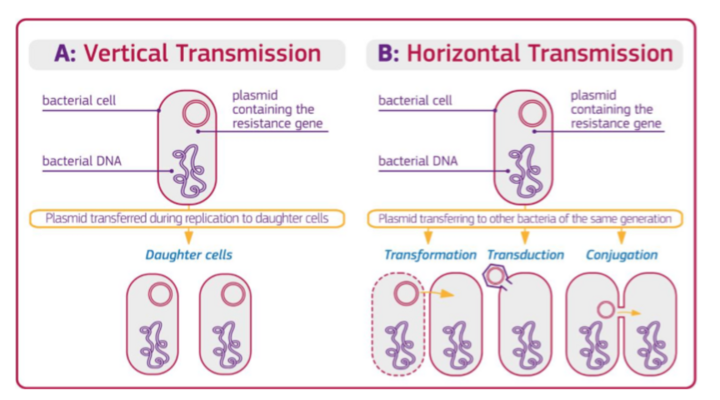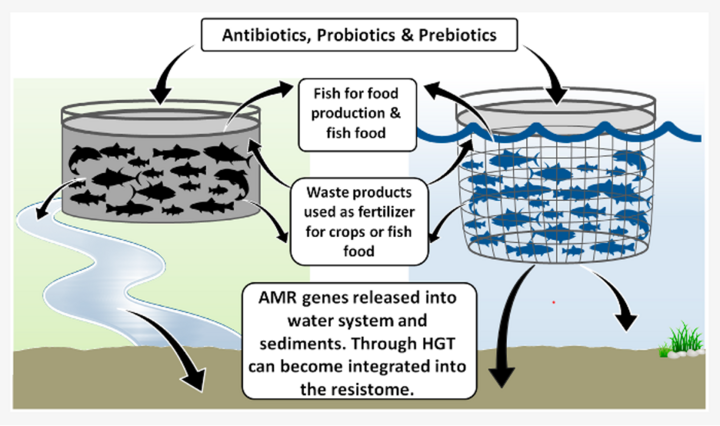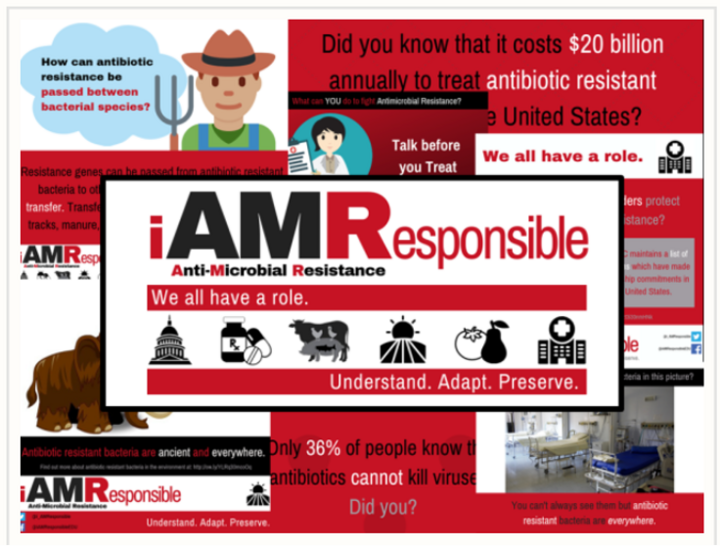Antimicrobial Resistant Bacteria Within Surface Water Bodies
This article is written by a University of Nebraska-Lincoln student, Jake Richardson, as part of their Animal Manure Management class in Biological Systems Engineering. It has been reviewed by experts to encourage accuracy of issues presented. The article represents the student’s understanding of the subject addressed at this stage in their career. Rick Koelsch, faculty instructor.
Antimicrobial resistance is a challenge that many face today in the agricultural field. As antibiotics and supplements are given to farm animals and their manure applied to crops and pasture, microbes are demonstrating resistance to antibiotics in agricultural settings. These bacteria have also been found residing in surface water bodies after being influenced by agriculture or animal production. These highly resistant bacteria have caused problems for human health with exposure to these bacteria.
What is AMR?
Increased presence of antimicrobials causes more advantage for resistant microorganismsAntimicrobial resistant bacteria are bacteria that become resistant to antibiotics and other antimicrobials, much like the name infers. These antimicrobials can include antibiotics, antifungals, antivirals, antiparasitics, heavy metals, or biocides (Singer, et. al., 2016). The presence of these chemicals or compounds meant to kill microorganisms can help the survivors become resistant to what killed the others. Although resistant genes occur naturally, as is the way of survival, the increased presence of antimicrobials causes a more advantageous scenario for bacteria to survive with certain resistances. When reproducing, these resistant bacteria can transfer this resistant ability (see Figure 1) through vertical transmission, but they can also make other same-generation organisms resistant through horizontal transmission (Sonseverino et. al., 2018). The co-selection of genes is also what causes problems residing in surface waters (Singer, et. al., 2016). This co-selection can be manifested by the selection of genes that foster the maintenance of other resistant genes or where one gene can offer resistance against multiple toxins (Singer, et. al., 2016). Both scenarios can create risks for humans as these AMR bacteria find their way to surface waters.

Importance and How It Happens
Current AMR related deaths estimated at 700,000 per year and an increase to 10 million per year by 2050The typical ways that resistance-inhibiting chemicals are administered to the environment are through industrial wastewater, spreading of animal manure or sludge, or uses in aquaculture (Singer, et. al., 2016). All three of these forms can directly affect the contents of surface water. One reason these antibiotics make it to surface waters is due to their use in animals. As farmers use antibiotics in animals ranging from cows to fish, some of these antibiotics are excreted in the manure. Those manures used on land can be washed into surface bodies by rain or other means. When antibiotics are used for aquaculture, the residual antibiotic are excreted into a water body. The antimicrobial agents, which are usually mixed with feed, can be residual in an aquatic environment for many years after initial use (Watts et. al., 2017).

What Can Be Done
Unfortunately, there are still many knowledge gaps in the information we have about AMR. However, from what we know about how AMR can end up in our surface water, there are actions that can be taken to reduce the amount present. Here are some steps you can implement to demonstrate your responsible management of antibiotics:
- When using antimicrobials, one should make sure they use the correct prescription. For Nebraska livestock farmers, working with your veterinarian to implement the Food and Drug Administration’s Veterinary Feed Directive is essential for responsible antibiotic use. Nebraska targeted information for the Veterinary Feed Directive is available from Nebraska Extension.
- If manure is going to be spread, the one who is spreading should make sure that precautions are taken, such as buffer zones for runoff or other preventative measures to keep the manure on the field. Knowing the correct time to apply manure that includes antimicrobials is also an important part in keeping the contaminants out of surface water. For example, planning to apply at times not close to storms or heavy rainfall can be a good way of keeping manure on fields. Additional ideas are discussed in Manure Management Strategies for Limiting Antibiotic Runoff and Managing Runoff Holding Ponds During Wet Weather.
- Antibiotics tend to move to surface water similar to soil particles and phosphorus. Any practices you implement to minimize erosion and phosphorus loss demonstrates responsible management of antibiotics. Additional ideas are found at Phosphorus Loss.
Also, what is extremely important is how the knowledge and awareness of these issues can be a good first point to make. Other small things can also be of help, such as washing hands more often and correctly disposing of antibiotics. These practices can help by limiting ingestion of excess antibiotics and keeping antibiotics where they should be. Overall, there is much we do not know regarding AMR and how it will affect us, but these steps demonstrate responsible management of antibiotics.
To learn more about antibiotic resistance and responsible management, follow @I_amresponsible on TwitterOne specific initiative that has been put in place is that of iAMResponsible, created by Dr. Amy Schmidt at the University of Nebraska-Lincoln. This program aims to educate people and farmers on AMR related issues and helps raise awareness. Another focus of the program is conducting research on how to minimize AMR impacts and mechanisms. For more specific actions to take and to get more information visit @I_amresponsible on Twitter

A current initiative through the University of Nebraska-Lincoln:
AMResponsible: Educating Food Producers & Consumers About Antimicrobial Resistance
i(AM)Responsible: A Nationwide Antimicrobial Resistance (AMR) Education Network
References:
Watts, J.E., Schreier, H.J., Lanska, L., Hale, M.S. (2017). The Rising Tide of Antimicrobial Resistance in Aquaculture. Marine Drugs. 15(6). 158.
Sonseverino, I., Cuenca, A.N., Loos, R., Marinov, D., Lettieri, T. (2018). State of the Art on the Contribution of Water to Antimicrobial Resistnace. JRC Technical Reports.
Singer, A.C., Shaw, H., Rhosed, V., Hart, A. (2016). Review of Antimicrobial Resistance in the Environment and Its Relevance to Environmental Regulators. Frontiers in Microbiology. 7:1728.
This article was reviewed by : Lisa Durso, USDA Agriculture Research Service Scientist and Hannah Greenwell, Nebraska Extension Educator